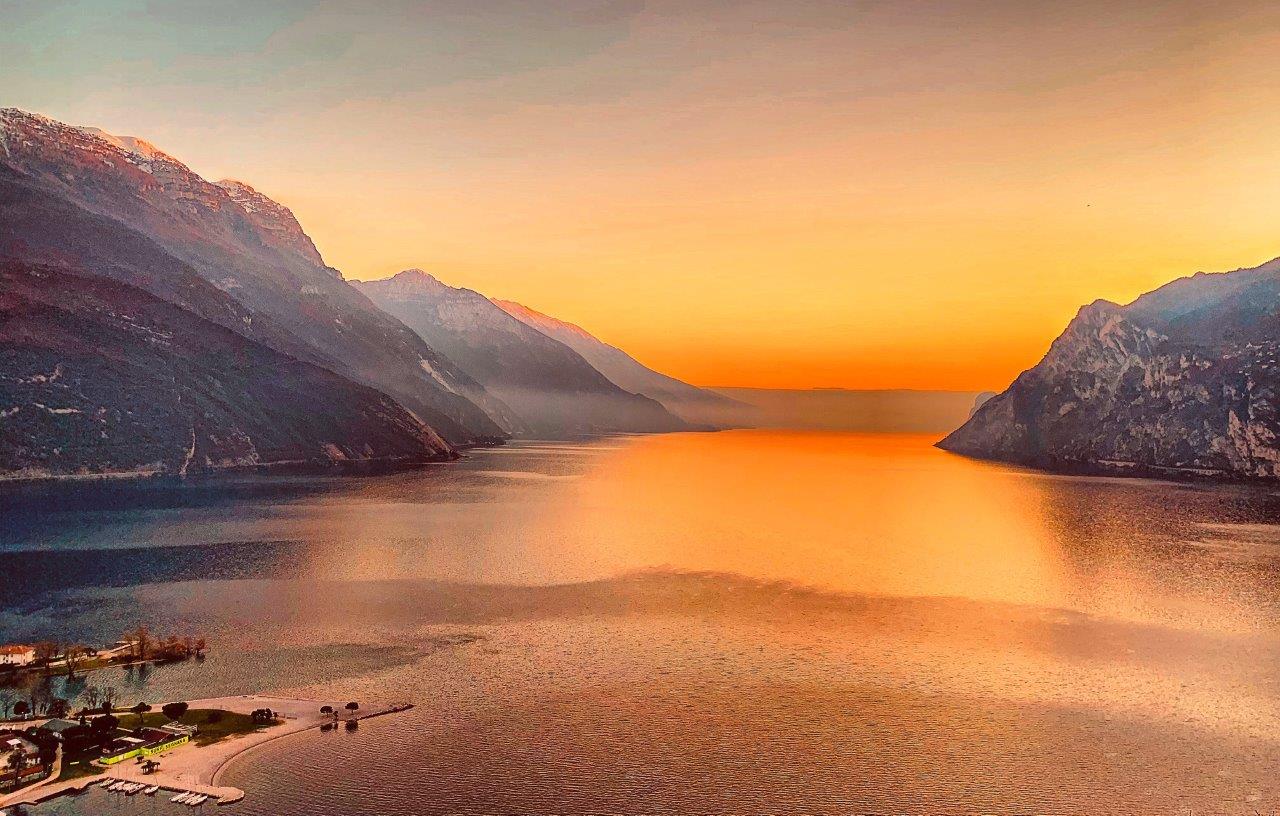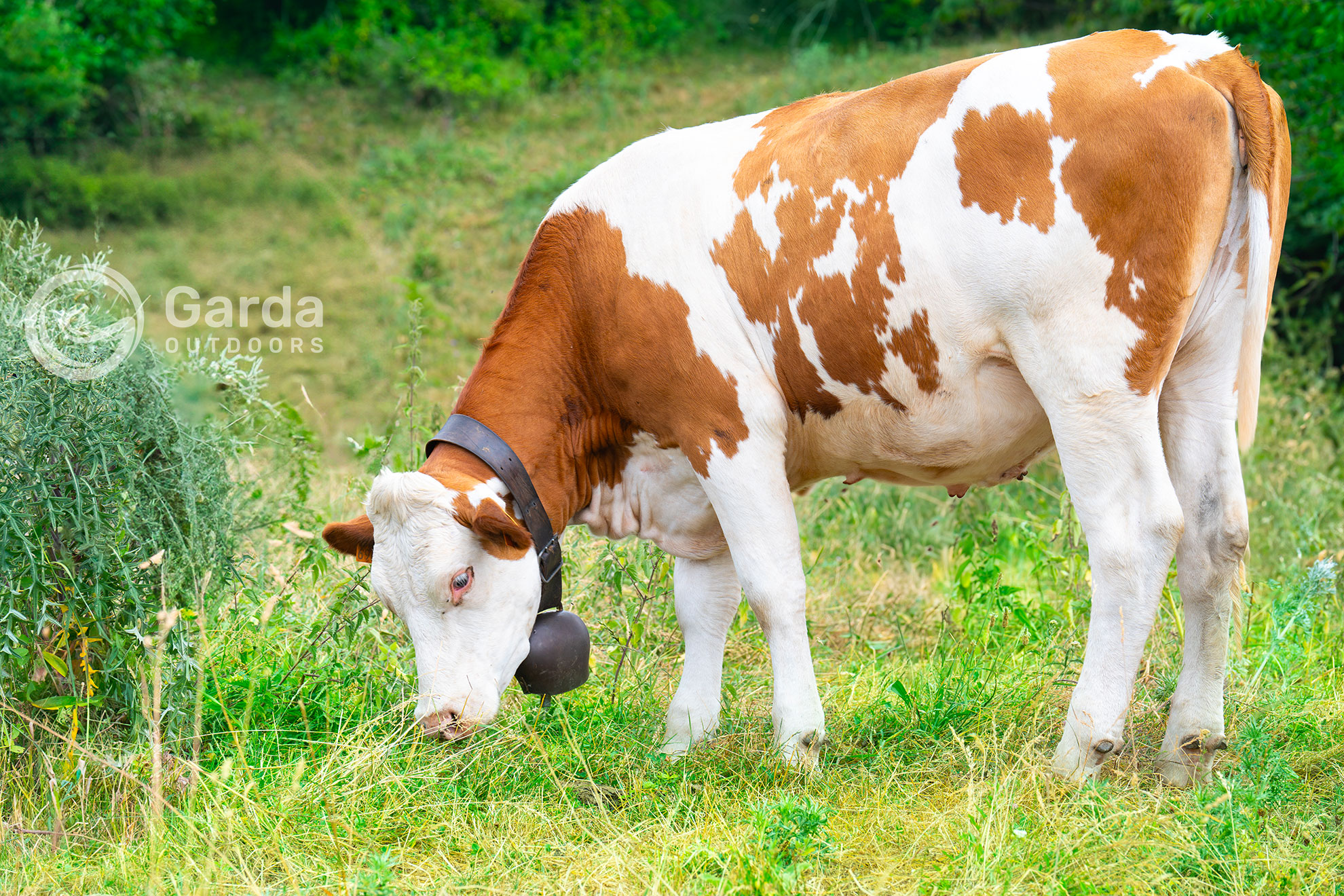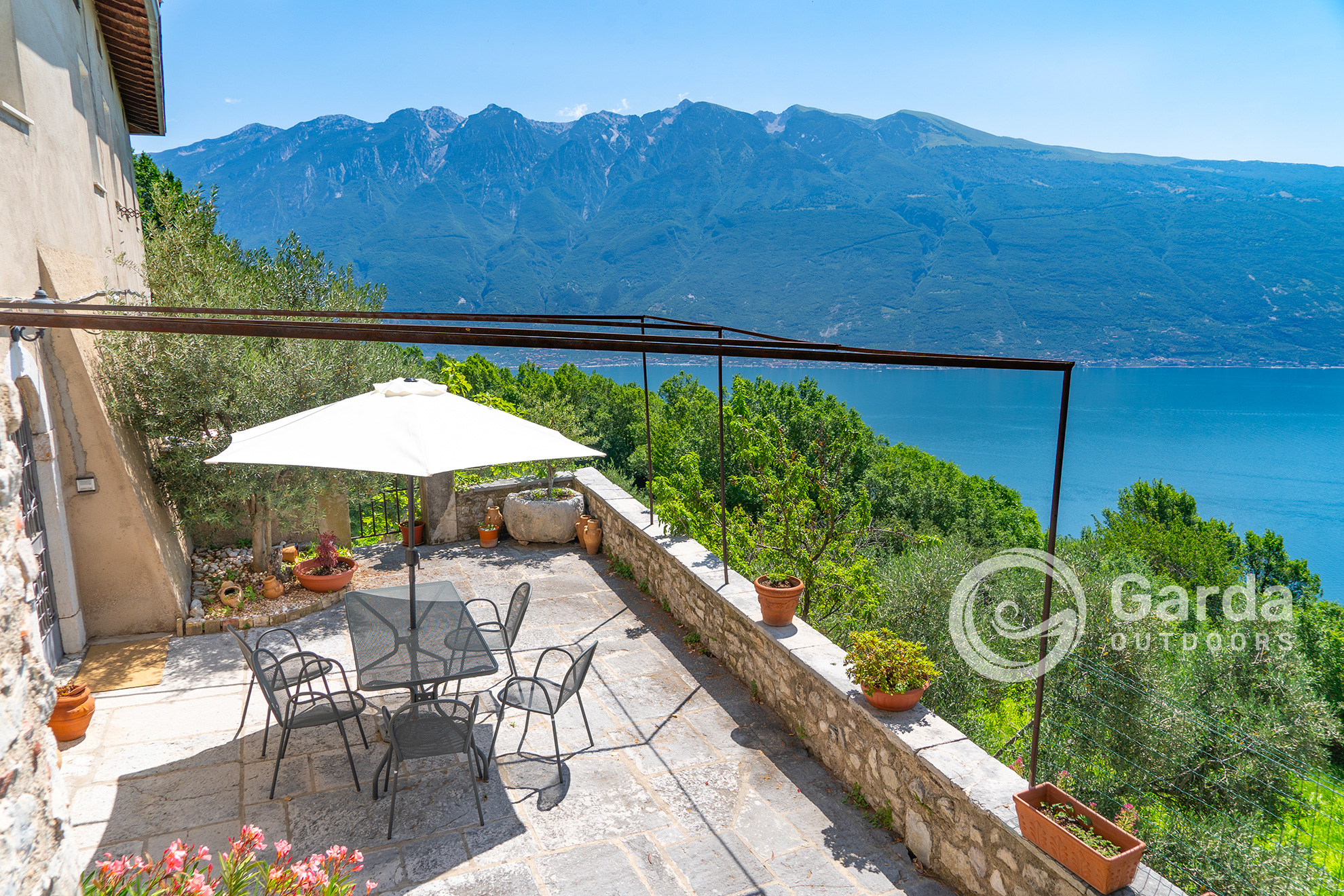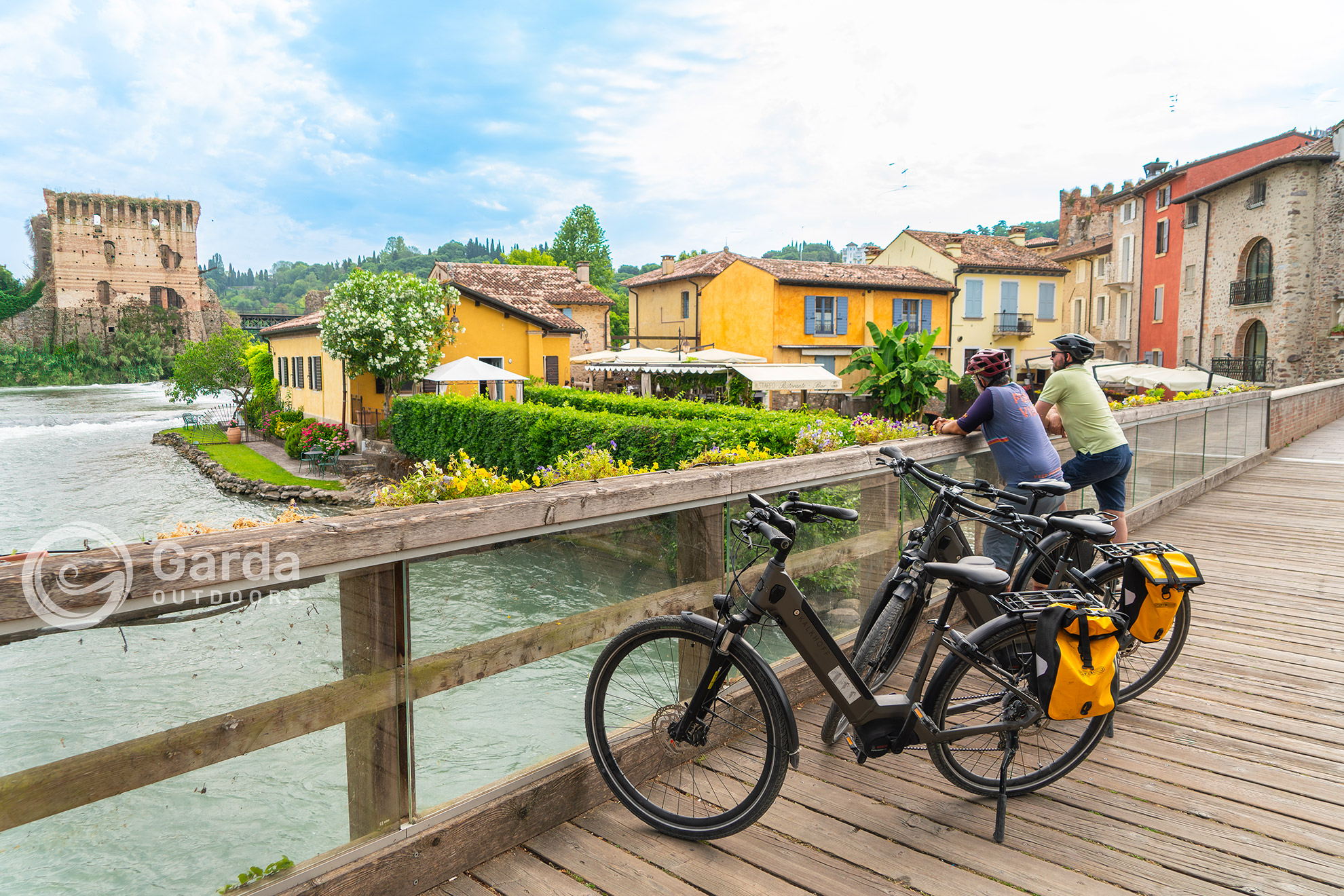You can find a nice walk to immerse yourself in your own thoughts among the steps leading to Monte Brione (376 m a.s.l.); a hill that divides the town of Riva del Garda from the hamlet of Linfano (province of Arco – TN), on whose slopes there is also the Sarca river (main tributary of Lake Garda). The biotope of the same name was established as a protected natural area in 1992. Here there are over 500 species of flowers and plants, some typical of mountain areas, many other characteristics of environments with a Mediterranean climate, such as holm oak and broom. In particular, more than 20 species of orchids are reported on the Brione.
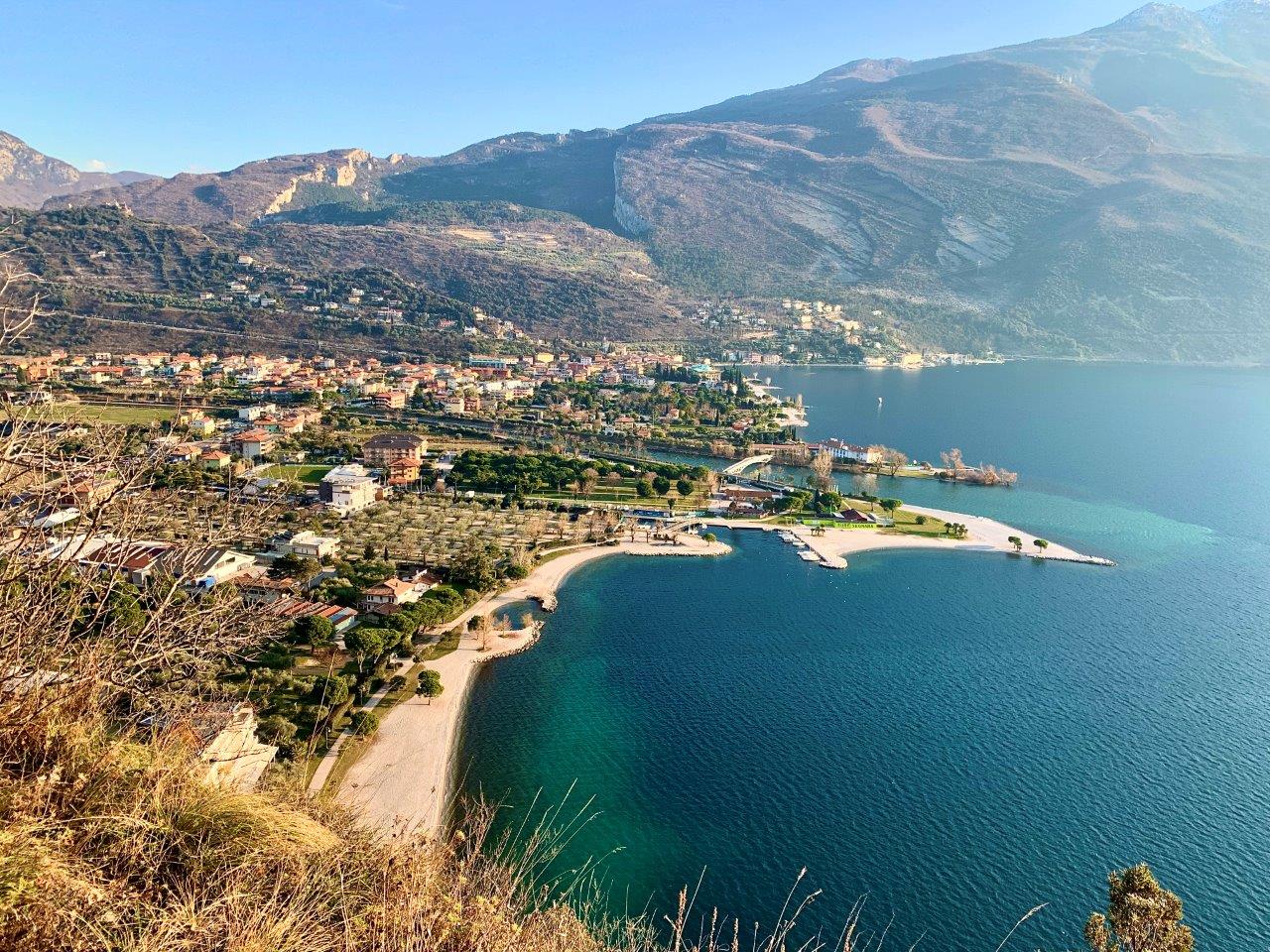
Where the trail on Monte Brione begins.
Leave your car comfortably at the parking lot in Viale Rovereto/Porto San Nicolò (Riva del Garda – TN). From there the beautiful path climbs, alternating between woods and marvelous terraces planted with olive groves.
The glimpses of Lake Garda that this route allows you to glimpse literally take your breath away. You will feel like you are immersed in a large fjord with the sea in front. Really unique and suggestive to see the whole depth of the lake from here!
It is a magnificent walk also suitable for children and our four-legged friends. It is not difficult and it is not exposed.
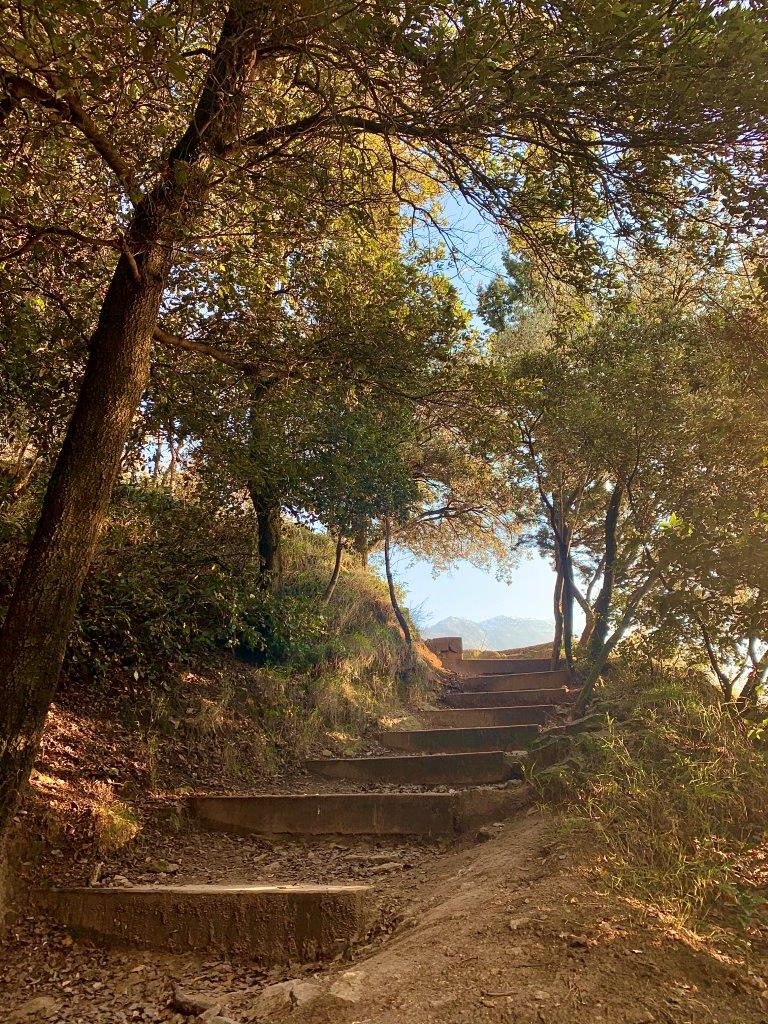
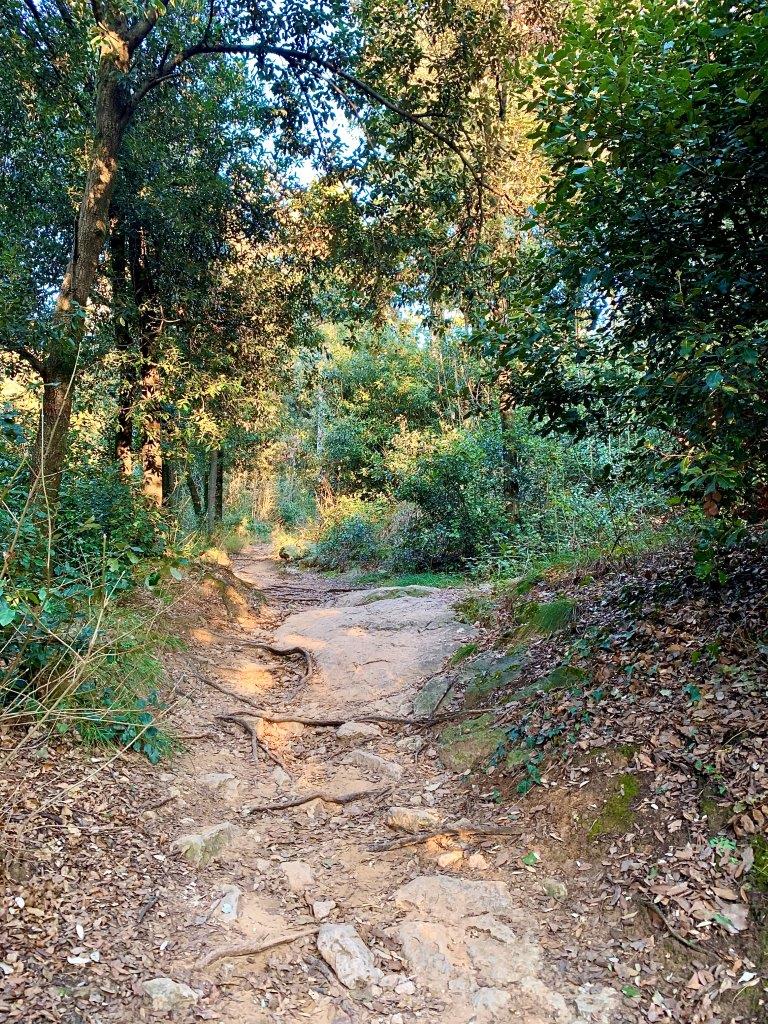
The Forts of Monte Brione.
Along the way there are also the remains of some fortifications built by the Austro-Hungarian army between 1862 and 1911 to transform Upper Garda, directly on the border with the Kingdom of Italy, into an impregnable fortress. Fascinating for fans of the history of the Great War and perfect hiding places for children’s games.
From the port along the Brione crest, you will first come across the Felsbatterie San Nicolò, a cave work which replaced the previous South Battery (of which the ruins of some ancillary works remain) and which was also used during the Second World War. In a short time you reach Forte Garda, which could host a garrison of 150-200 men. Inside, you can still admire the tiled floors, the dovecote (where, in the event of a conflict, the bodies of the fallen could be temporarily placed) and other details that made it the main fort of Brione. To hide it from enemy artillery and camouflage it with the mountain profile, Forte Garda had been carved into the rock, so much so that the front facing the lake is lower than the rear where the entrance is. The roof and the exposed parts were protected with a layer of reinforced concrete about 3 meters thick. The fort was equipped with a vast underground system, consisting of a long and articulated tunnel that started from the entrance moat (today not open to visitors).
Going further, you will find the remains of the 15 cm mortar pitches; almost on the top of the Brione there is the Batteria di Mezzo, a fortification in squared stone, with a concrete roof, which could house a garrison of 70-80 men. It was armed with rail guns and its main purpose was to control the Loppio valley.
From Batteria di Mezzo, continue along the path that runs along the ridge of the mountain, passing the antennas and coming out at the mule track to Forte Sant’Alessandro (North Battery, also called Forte Campedel), a work built at the northern end of the hill. The fort, of which today only the ruins surrounded by vegetation remain, served as a support for optical signals to the other forts. The powder keg below, equipped with two anti-aircraft guns, was used until after World War II. Between the two works there are small caverns used as storage and an observatory facing the Linfano plain. From the powder magazine, return to the Monte Brione road, along which you descend to the San Nicolò port, visiting the works that overlook the route. Among these there is also a gallery with a plaque on the entrance portal, which opens onto the wall overlooking the lake that probably housed a spotlight for monitoring the Linfano-Torbole area. Alternatively, from the powder magazine it is possible to continue along the path that leads to the village of Sant’Alessandro and from there to return on the asphalted road to the port.
Technical information for hikers: Felsbatterie San Nicolò – Forte Garda (20 minutes); Forte Garda – Batteria di Mezzo (30 minutes); Batteria di Mezzo – Forte San Nicolò (40 minutes). Difference in altitude 350 m.
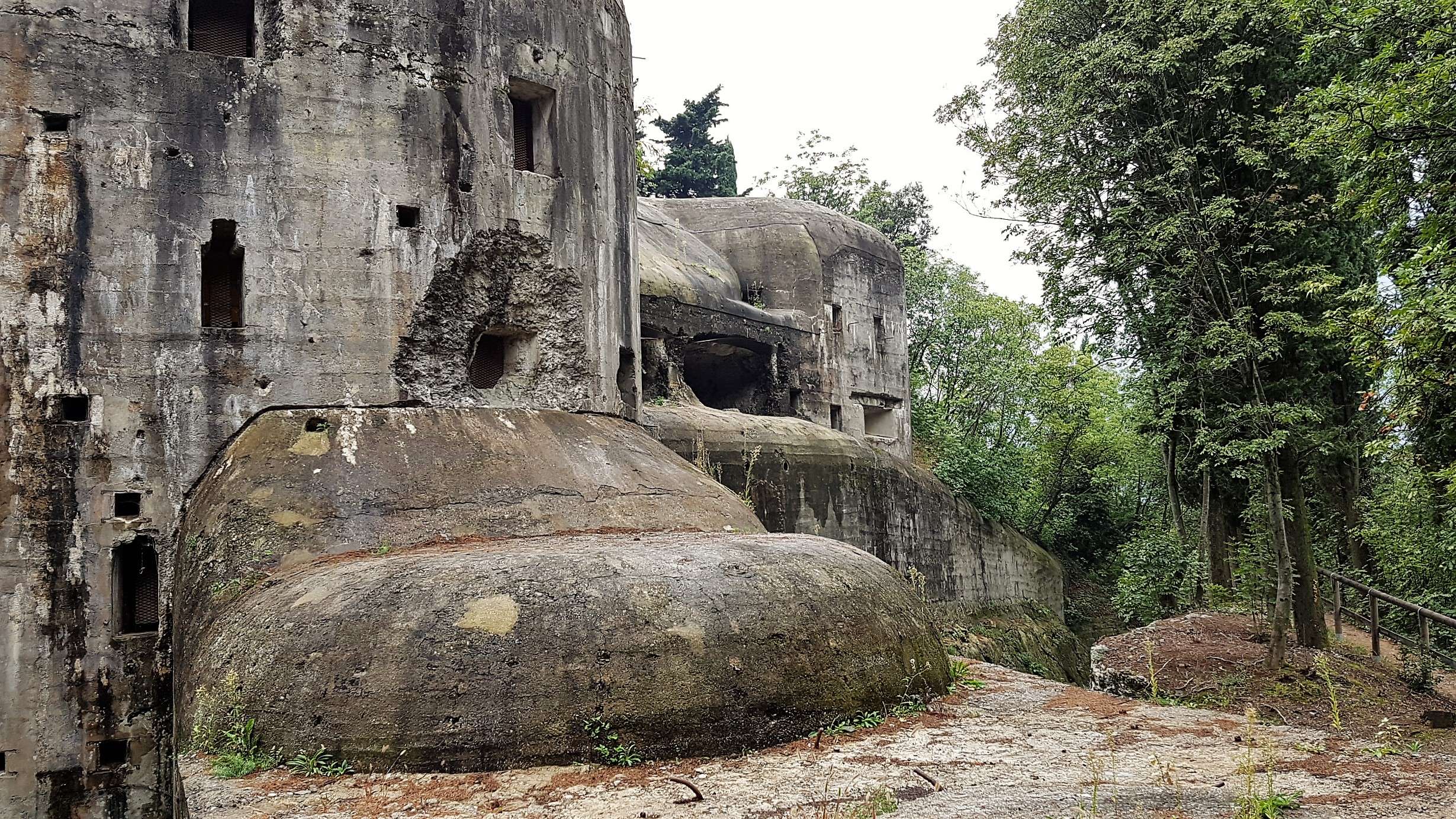
Among the notions that we could define as “sacred” one is definitely this: sport saves life. As long as your musculature is committed to supporting the effort, the psyche regenerates and finds lucidity.
Maybe that’s why I started trekking, to reach the top and observe little Silvia from above as she evolved along the way.
See you next time dear Outdoors!
Silvia Turazza – Garda Outdoors editorial staff
